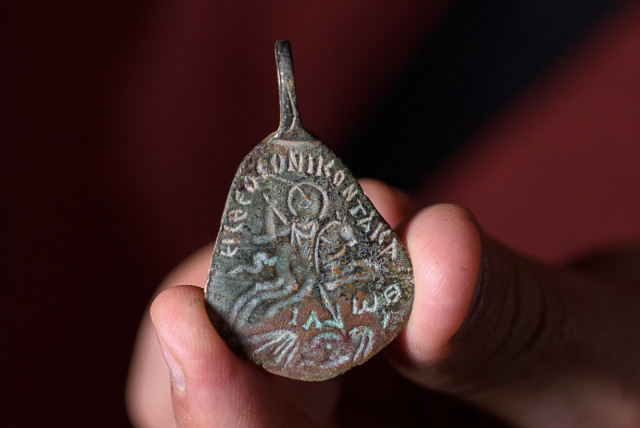'Segulot': Why Jews believe in medicine over superstition - opinion

The proper Jewish approach to healing is to utilize the remedies proven to be efficacious under the scientific method, while supplementing these natural efforts with prayers and good deeds.
In recent years, the Jewish world has seen the popularization of rituals or charms, known as segulot, which are purported to heal those in need. Many of the segulot are mentioned in earlier rabbinic literature or popular manuals that were published before contemporary scientific norms came to dominate Western medical discourse. Some of these books, such as Refael Hamalach, composed by my great-great-grandfather Rabbi Yehuda Yudl Rosenberg in 1910, have now been republished with glossy covers and attractive formats. This trend, sadly, represents a retreat from the mainstream rabbinic view that promotes utilizing medicinal methods that have proven efficacy.
Classic rabbinic literature has a complex but generally negative attitude toward utilizing superstitions and other occult practices. Before entering the Land of Israel, Moses warns the Israelites not to allow soothsayers, enchanters, witches, and necromancers within their midst. “You shall be wholehearted with the Lord your God.” The primary concern is that such practices will draw people away from their fealty and belief in the one true Master of the Universe. While such “Amorite practices” (darchei ha’emori), as they are known, aren’t necessarily idol worship, they do not conform with a monotheistic worldview that recognizes one, omniscient God.
The sages were sensitive to the misconception created by a well-known biblical passage in which Moses holds up a copper serpent wrapped around a staff to help heal plague victims. “But is a snake the source of life and death?” the sages ask. “Rather, the verse means that when Israel looked up and submitted their hearts to their Father in Heaven, they were healed; but if they did not do so, they perished.” The biblical Israelites, regretfully, turned the serpent into a source of idol worship (II Kings 18:4). For this reason, king Hezekiah ground the serpent into dust, for which he was praised by the sages.
In line with this concern, Maimonides was adamant that Judaism only permits therapies that operate through “natural” means. He defined this as interventions dictated through reason and experience. Thus he praised the sages for banning the consumption on Yom Kippur of a dog’s liver lobe to heal someone who was bitten by a rabid dog. We violate Shabbat, Yom Kippur, and other prohibitions to heal those in danger, but only through proven means (what later scholars called “refua beduka,” or tested therapies). Inversely, if the intervention is proven to work, then it cannot, by definition, be within the prohibited category. As the sages taught, that which heals cannot be darchei ha’emori. We sometimes allow an experimental therapy, but only in cases where there is a rational basis to the trial, and the risk is either limited or the patient is already in a life-threatening situation with little alternative.
Where does Judaism stand on faith-based treatment for medical issues?
Other scholars, however, believed in the efficacy of more mystical-type interventions, even though they cannot be proven or explained. Some went so far as to assert that certain occult rituals are effective but nonetheless prohibited because they challenge our loyalty to God. As such, some only prohibited therapies that were tied to pagan worship. Others limited the “darchei ha’emori” prohibition to things listed by the sages. Beyond that closed list, anything else is permitted. A few added that we are less concerned today with practices whose connection to paganism has been long forgotten. Whatever the argument, it’s clear that some Jews over the ages utilized many mystical elements for healing. These include amulets, red strings, astrology, charms, and other invocations of mystical or metaphysical powers. Popular belief in certain incantations could be so widespread that even Maimonides permitted their use for sick people whose mental and physical health might be harmed from their fear of not having these means available. The positive placebo effect, as it were, justified the otherwise problematic interventions.
THERE IS no point in denying the historical acceptance of such segulot therapies throughout the ages. Certain strands of Jewish thought accepted their powers. Yet what’s critical to note is that their understanding of the physical order led them to believe in the medical efficacy of these interventions. We now have a vastly improved knowledge of the human body based on an empirical scientific method. Just as we have long rejected elements of Talmudic medicine that have been found to be incorrect, so, too, we must reject interventions that today are known to be pointless and even harmful, especially when they border on the heretical.
Let’s take one popular example: a “treatment” for jaundice by placing a pigeon on the navel of the person to “transfer” the jaundice to the bird, thereafter killing it but saving the patient. As Prof. Marek Tuszewicki has argued, this was based on the belief that excess bile was the cause of jaundice. Since antiquity, pigeons were believed to have no bile, as evidenced by their benign disposition. Thus, by pressing the pigeon’s anus to the patient’s body, one could “draw out” the unnecessary bile. Such a method “made sense” in previous generations. Yet in our era, we know that this has no proven efficacy, as Dr. Fred Rosner has shown. Continued use of such “therapies” is mere quackery in our times. The same can be argued for therapies relying on astrology and other mythical ideas. The fact that such interventions can be found in historical rabbinic sources is irrelevant to their inefficaciousness.
The proper Jewish approach to healing is to utilize the remedies proven to be efficacious under the scientific method, while supplementing these natural efforts with prayers and good deeds. This combination is the best segula for physical and spiritual health.■
The writer is executive director of Ematai, which helps Jews navigate their healthcare journey with Jewish wisdom. www.ematai.org
Jerusalem Post Store
`; document.getElementById("linkPremium").innerHTML = cont; var divWithLink = document.getElementById("premium-link"); if (divWithLink !== null && divWithLink !== 'undefined') { divWithLink.style.border = "solid 1px #cb0f3e"; divWithLink.style.textAlign = "center"; divWithLink.style.marginBottom = "15px"; divWithLink.style.marginTop = "15px"; divWithLink.style.width = "100%"; divWithLink.style.backgroundColor = "#122952"; divWithLink.style.color = "#ffffff"; divWithLink.style.lineHeight = "1.5"; } } (function (v, i) { });

